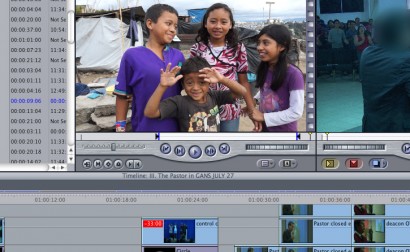WASHINGTON, DC, 17 November 2013 So youve finished the production stage of your documentary. Youve got a pile of media in the hard drive. And youre looking at a blank time line. Now what?
Every filmmaker devises his/her own system for the post-production stage of the process, but heres what Ive found to be most effective for me: Watch the material in real time. While you watch, begin to pull material down to the timeline in the order that YOU THINK it will appear in the final product. Forget about transitions. Dont worry about trimming the clips. For right now, just get the images down on the timeline in the approximate order that you think they should appear in the final product. Construct a visual story.
By watching and listening, youll find out what you REALLY have, especially regarding sound, in terms of raw material. Ive come back from shoots to be disappointed with material I expected to be great. But Ive been pleasantly surprised at how unexpectedly good other material is. So you dont really know what you have until you see it and listen to it.
As you pull clips down to the timeline, put your most powerful images at the beginning. You have a painfully short period of time to engage your audience, either emotionally or intellectually, with your documentary. So put the best stuff at the beginning and then back into the rest of the story if you have to.
While you watch and listen, transcribe the material and begin writing the script and treatment. Transcribing the material gives you a much deeper sense of what you have than you would without transcribing. Writing the script forces you to match visuals with sound. If the script includes narration, this process forces you to articulate the story as you go along.
Nothing, and I mean nothing, can take the place of a script that you can read, edit, and understand what fits and what doesnt fit. With a script you can see an entire paragraph of a characters actuality. And you can decide, for example, which sentence to take out, if need be. You cant do that without seeing a written document. Or at least I cant.
Once you get through watching and listening, go back to the Controlling Idea. Keep re-visiting that idea, or construct a new idea if the old one doesn’t fit your material. Then work the material to your satisfaction.
©Bill Gentile

